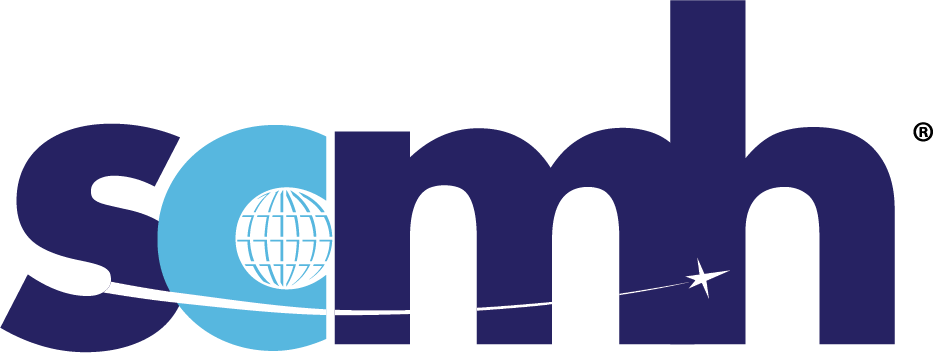Plan and Manage
Cross-functional business activities required to ensure that products and services achieve the expected level of product performance (on quality / on time / on cost) and customer expectations. This includes program and project management, balancing and forecasting medium-long term customer demand with operational & resource capabilities, overall planning of activities, identification, and mitigation of risks and issues, stakeholders relationship, and communication.
Aviation, Space & Defense companies continuously change the source of supply or manufacturing of a component, a component package, or assembly across a company or its external supply chain. Such movement of the work (products and associated activities) from one manufacturing site to another (internal or external) is referred to as “Work Transfer”. Work Transfers often cause On Time / On Quality (schedule and quality) issues because they are not adequately managed.
The purpose of this guidance is to provide guidelines for the application of effective risk management through a structured staged approach, including Advance Product Quality Planning APQP elements (Reference SCMH Section “Plan & Manage” Advanced Product Quality Planning), ensuring appropriate actions are launched, and decisions are made at the appropriate time and by the right level of management.
The purpose of the Advanced Product Quality Planning (APQP) Guidance Material is to introduce the requirements defined in the International Aerospace Standard 9145 Requirements for Advanced Product Quality Planning (APQP) and Production Part Approval Process (PPAP). The APQP Introduction found in the Core Guidance Section below was designed to serve as a communication tool for introducing the concepts of APQP. The APQP Manual provides detailed information regarding the development of each of the APQP deliverables listed in 9145 Appendix B.
The content of section APQP Introduction presentation contains information on the following:
- History; 2. Purpose & Benefits; 3. Main Pillars of APQP; 4. Principles; 5. Managing the APQP Process; 6. Reporting
Webinars
-
- APQP Overview -Awareness (Recording 5 DEC 2018)
- APQP – Design Risk Analysis Awareness (8 OCT 2019 Recording)
- APQP – Process Flow and Process Failure Modes and Effects Analysis PFMEA (22 OCT 2019 Recording)
- APQP – Control Plan Awareness (Recording November 2019)
- APQP – Measurement Systems Analysis (Recording December 2019)
- APQP – Process Capability and Control (Variation Management) (Recording 7 January 2020)
- APQP – Production Part Approval Process (Recording 21 January 2020)
- SCMH 7.2.4 APQP Phase 1 Checklist Rev 1 Dated MAY2017
- SCMH 7.2.5 APQP Phase 2 Checklist Dated 26OCT2018
- SCMH 7.2.6 APQP Phase 3 Checklist Dated 26OCT2018
- SCMH 7.2.7 APQP Phase 4 Checklist Dated 26OCT2018
- SCMH 7.2.8 APQP Phase 5 Checklist Dated 26OCT2018
- SCMH 7.2.9 Process Flow Diagram Template Dated 26NOV2019
- SCMH 7.2.10 DFMEA Template Dated 28JAN2020
- SCMH 7.2.11 PFMEA Template Dated 16DEC2019
- SCMH 7.2.12 APQP Element Applicability Template Dated 10MAY2017
- SCMH 7.2.13 Control Plan Template Rev A Dated 20FEB2024
- SCMH 7.2.14 Maturity Matrix Rev New Dated 3SEP2019
- SCMH 7.2.15 APQP Applicability Matrix Rev New Dated 27NOV2018
- SCMH 7.2.16 KC Traceability Form Rev New Dated 13JUL2020
- SCMH 7.2.17 KC Traceability Form Guidance Rev New Dated 13JUL2020
- SCMH 7.2.18 Design Risk Analysis LINK to 2.8.1
- SCMH 7.2.19 DFMEA Examples Rev New Dated 29JUN2020
- SCMH 7.2.20 Packaging Preservation Labeling Approval Form Template Rev New Dated 15FEB2021
- SCMH 7.2.21 APQP Presentation - ASQ Webinar 01MAY2024
- APQP Overview Webinar
- APQP Design Risk Analysis Webinar
- APQP Design Risk Analysis Webinar Q&A
- APQP Process Flow and PFMEA Webinar
- APQP Webinar focused on Control Plan
- APQP Control Plan Webinar Q&A
- APQP Measurement Systems Analysis Webinar
- APQP Process Capability and Control Webinar
- APQP PPAP Overview Webinar
There are modules related to APQP in the Aerospace Improvement Maturity Model (AIMM). AIMM can help to evaluate the maturity of your QMS in managing this topic in relation to the requirements of the IAQG 9100 Standard. See AIMM modules 8.1 Operational Planning and Control, 8.3 Design and Development of Products and Services, 8.5-A Control of Production and Service Provision, 8.5-B Control of Equipment and Special Processes; Production Process Verification, and 8.5-C Identification, Change Control, Preservation, Release, and Post-Delivery.
The Risk Management guidance material is in the form of an adaptable procedure designed to assist organizations in executing the AS/EN/JISQ 9100D:2016 instructions for risk management. This includes “risk-based thinking” (clause 0.3.3), “planning for ‘actions to address risks and opportunities’ (clause 6.1), “operational risk management” (clause 8.1.1), and other specific elements of risk throughout the standard. The purpose of the guidance, including its variety of forms and explanations, is to provide guidelines for the exercising of effective risk management and control throughout a product life cycle across all company processes and its external supply chain. Risk management is a concept from cradle to grave of a business process involving all parties of an organization along the value creation chain.
The first reason to apply risk management is to reduce the likelihood and severity of something harmful happening to the business. This involves a focus on the risks to meeting customer requirements and preventing product non-conformance escapes. The absence of a Risk Management program can impart known and unknown problems to the product for the Customer and Stakeholders. There is also the consideration of positive risks. This aspect of managing a process so as to make positive risk events more likely to happen is a new aspect with AS/EN/JISQ 9100D:2016.
- SCMH 7.3.3 Operational Risk Management Awareness Rev New Dated 25OCT2019
- SCMH 7.3.4 Risk-Based Thinking Awareness Rev New Dated 25OCT2019
- SCMH 7.3.5 Operational Risk Management Details Rev New Dated 25OCT2019
- SCMH 7.3.6 Risk-Based Thinking Details Rev B Dated 25OCT2019
- SCMH 7.3.8 Positive Risk Explained Rev New Dated 25OCT2019
There are modules related to 7.3.4 Risk-Based Thinking and 7.3.5 Operational Risk Management in the Aerospace Improvement Maturity Model (AIMM). AIMM can help to evaluate the maturity of your QMS in managing this topic in relation to the requirements of the IAQG 9100 Standard. See AIMM modules 6.1 Actions to Address Risks and Opportunities and 8.1.1 Operational Risk Management
This guidance depicts industry best practices for effective root cause analysis and problem-solving. The objective is to aid in creating a robust root cause analysis and problem-solving process that aids in reducing the number of issues (undesirable conditions, defects and failures) and to minimize their impact on quality, delivery performance, and costs; including how issues are managed and communicated between all stakeholders (engineering, Material Review Board MRB, suppliers, customer, etc.), how it is ensured that the right measures are taken at the right location, at the right time and by the right persons, and how containment actions (to protect customer and production) are identified and managed.
The Aerospace Standards (e.g. 9100:2009) call for the implementation of Configuration Management (CM) and document control throughout the entire life cycle of product realization.
Configuration Management is a discipline widely used in the acquisition of defense systems, as well as commercial products and services. A disciplined CM process ensures that products conform to their requirements and are identified and documented in sufficient detail to support the product life cycle. CM assures accurate product configuration information and enables product interchangeability and safe product operation and maintenance to be achieved.
When Configuration Management principles are applied using effective practices, return on investment is maximized and product life cycle costs are reduced. The small investment in resources necessary for effective Configuration Management is returned many folds in cost avoidance.
There is a module related to Configuration Management in the Aerospace Improvement Maturity Model (AIMM). AIMM can help to evaluate the maturity of your QMS in managing this topic in relation to the requirements of the IAQG 9100 Standard. See AIMM module 8.1.2 Configuration Management
Manufacturing processes in today’s environment are often very complex and span across a number of business areas and functions, with the goal of delivering a quality product on time to a Customer at a cost they are willing to pay for them. This span of process activities, used to transform raw material into something that has a paying Customer, is referred to as a value stream.
Value stream thinking requires us to drive the elimination of process waste by strategically understanding where within the value stream we should apply process improvement activities in order to positively impact quality, delivery, and cost as a whole.
A Value Stream Map (VSM) is a graphical representation of the entire value stream which includes material, information and product flow. It contains all of the actions that are required to take a product or service, from order to delivery.
The information found in this section will help you to create a Value Stream Map for both your Current and Future State.
Global aerospace on time delivery looks around 70%, or “one out three orders is delivered late, as a CEO of a major Aerospace Company mentioned during a meeting. “This is obviously poor industrial performance and not compliant with aerospace Business requirements.”
Major aerospace companies (customers and suppliers) are complaining about this performance level and are seriously struggling with the extra cost generated; missing parts, expediting, shortages, extra working time, recovery plan, and the high level of work in process, to name a few.
The purpose of the Capacity Management, Ordering & Logistics guidance is to show how it is possible to minimize your effort and increase your margins.
The objective of this document is to provide the policies and best practices regarding the content and methods that should be incorporated in the planning of compliance education. It further includes how to implement the material when providing compliance training to the personnel of an organization. Compliance education is vital in enabling an organization to establish and continuously maintain its compliance structure, thereby reducing potential risks to the aviation, space and defense industries.
There is a module related to Compliance Education in the Aerospace Improvement Maturity Model (AIMM). AIMM can help to evaluate the maturity of your QMS in managing this topic in relation to the requirements of the IAQG 9100 Standard. See AIMM module 7.3-4 Awareness and Communication
This guidance provides an understanding of Project Management. Project Management is a structured process that aids teams in achieving specific project goals: Quality; Cost; Delivery.
The Five Phases of Project Management described in the guidance include Initiate; Plan; Execute; Close; Monitor and Control.
Webinar: Project Management -APQP Alignment FEB 2025
The aviation, space and defense industry by nature of the complexity of its products is highly dependent on the supply chain having a complete and comprehensive understanding of the product and process requirements that are meant to assure product conformance and control.
Contractual requirements review and management are important elements of a Quality Management System (Reference: IAQG 9100:2016) and will enhance overall supply chain performance with regards to On-Time-On-Quality Delivery (OTOQD).
The purpose of this section is to provide guidelines, tips, and techniques helpful in the requirements review and management process between various levels of suppliers.
There is a module related to Contractual Requirements Review and Management in the Aerospace Improvement Maturity Model (AIMM). AIMM can help to evaluate the maturity of your QMS in managing this topic in relation to the requirements of the IAQG 9100 Standard. See AIMM module 8.2 Requirements for Products and Services
IAQG standards AS/EN/JISQ/SJAC 9100, 9110 and 9120 require every organization to continuously improve their performances and determine actions to ensure these performances are in line with targets defined by internal and external stakeholders.
IAQG Product and Supply Chain Improvement Strategy Stream has identified a list of most commonly used Key Performance Indicators (KPIs) covering the main domains of the supply chain (‘Customer metrics’, ‘Engineering and Product Development’, ‘Program Management’, ‘Manufacturing and Production’, ‘Supplier Management’, and ‘In Service – feedback from operations’).
Use of these KPIs should support harmonization and reduction of customization of these KPIs between the entity establishing them and its different internal and external customers. The list is not exhaustive and will evolve as needed.
Some of the KPIs described in this section are used to directly measure the result or the performance of an activity, while some others are designed to analyze data (e.g. Pareto analysis), evaluate the robustness of a process and determine necessary actions.
Depending on their nature, their level of granularity, and the customer requirements, these KPIs:
-
- may be systematically provided to the customer (e.g., monthly or quarterly),
- may be monitored by the organization to manage its business and be provided to the customer on specific request only (e.g., in case of performance degradation, in the frame of continuous improvement or development project, during audits or assessments)
- or may remain internal (never disclosed externally)
An Integrated Management System IMS: Is a single quality management system integrating and managing multiple aspects of organizational performance to meet the requirements of multiple management standards (e.g., Quality Management System standard like 9100 and 9110, Environmental Management System standard like ISO14001, etc.). NOTE: Management systems may exhibit different levels of integration.
Integrating all elements of the Management System will simplify the overall management of processes and thus benefit the company.
The guidance material is intended to:
- Create awareness and show the benefits of implementing Integrated Management Systems (IMS).
- Provide some guidance about how to implement and maintain an effective Integrated Management System
The Aerospace Industry is reliant upon a complex supply chain and a wide range of sophisticated equipment, processes, skills, and competent people.
Certification to the 9100 Standard provides assurance that a Company’s Management System meets specified requirements. However, all Companies are always reliant upon a workforce whose skills and knowledge reflect today’s needs and continually grow to meet the changes and challenges they face. It is therefore the purpose of this guidance document to describe a generic five-step process for which the skills, knowledge, personal attributes, and experience are managed and maintained in accordance with 9100 paragraphs 7.2 Competence and 7.3 Awareness.
Webinars
There is a module related to 7.13 Competency Management in the Aerospace Improvement Maturity Model (AIMM). AIMM can help to evaluate the maturity of your QMS in managing this topic in relation to the requirements of the IAQG 9100 Standard. See AIMM module 7.2 Competence
Business Continuity planning is increasingly part of normal business practice. Recent acts of terrorism, geopolitical scenarios, pandemic outbreaks, and various widespread natural disasters have served to highlight the importance of business continuity planning by underlining the substantial risk of major operational disruptions for businesses. A best practice is for companies to prepare for a range of eventualities and risks which threaten the continuity of their business. This is particularly important in the context of modern-day risks and any unknown future risk (scenario building).
This topic presents SCMH users with a brief introduction to business continuity management. It aims to help the user to build and maintain a right-sized business continuity management system (BCMS). This guidance is not only about why an organization should manage business continuity and the principles behind it, it also provides actual tools and best practices based on practical experiences of some IAQG member companies.
Webinars
SCMH Webinar Focused on 7.14 Business Continuity Management to be held on January 26, 2022
- 7.14.4 BCMS Maturity Questionnaire Rev New Dated 24SEP2021
- 7.14.5 Business Continuity Plan Template Rev New Dated 24SEP2021
- 7.14.6 Business Continuity Plan Example (Burger Shop) Rev New Dated 24SEP2021
- 7.14.7 Restart Tracker Template Rev New Dated 24SEP2021
- 7.14.8 Restart Tracker Sample (Burger Shop) Rev New Dated 24SEP2021
- 7.14.9 Incident Monitoring Resources Rev New Dated 2NOV2021
This topic provides guidance on the use of remote Information and Communication Technology (ICT) to perform audits and product acceptance. It is the responsibility of the organization to assess whether the use of remote ICT constitutes a suitable alternative to the physical inspection of the part, appliance, product, or process. Remote ICT may have limitations that could render it unsuitable for some applications. Accordingly, careful consideration and risk management shall be applied and taken into account in particular, the novelty and criticality of the product or process. The organization that intends to use the remote ICT for such purposes should first discuss the feasibility aspects with its IT department.
Webinars and Demonstrations:
Applying Remote Technologies to Audits and Product Acceptance Webinar Recording 13DEC2022
Manufacturing is complex. Some firms manufacture a few different products whereas others manufacture many products (or many families of products), and some products are built at a high production rate whereas some others are produced at a low rate (or even one unit each). However, each uses a variety of processes, machinery, equipment, labor skills and material. To be profitable, a firm must organize all these resources to make the right goods at the right time at the right quality and do so as economically as possible. To do that, it is essential to have a good planning and control system to reconcile demand with supply (that means to ensure the organization will always be able to deliver to its commitments and will not commit if it is not capable).
A good planning and control system must answer the following four questions:
1) What are we going to make?, 2) What does it take to make it?, 3) What do we have?, and 4) What do we need?
Manufacturing Resources Planning (MRP2) is a planning and control system with 5 major levels: Strategic Business Plan; Sales and Operations Planning; Master Production Schedule; Material Requirements Planning; Purchasing and Production Activity Control.
This guidance aims to enable Supply Chain Organizations to have a better understanding of unique considerations in space hardware design and production quality assurance compared to the aviation sector.
This guidance aims to introduce Data Science & Artificial Intelligence in AS&D.
Webinars
Data Science & Artificial Intelligence (Recording 7 DEC 2022)



